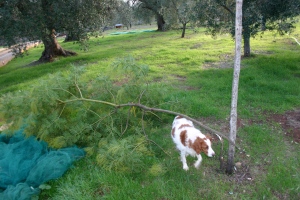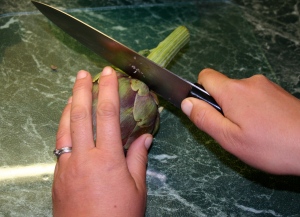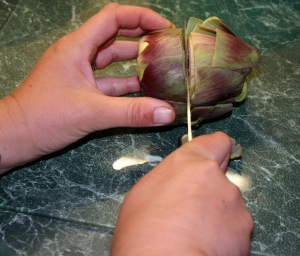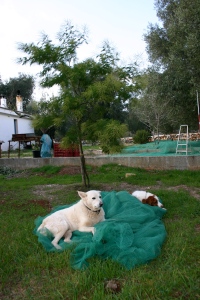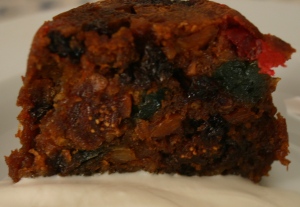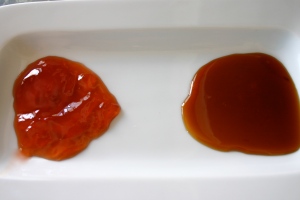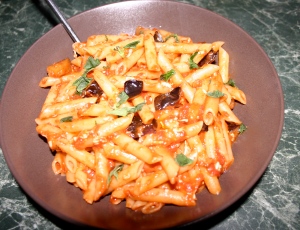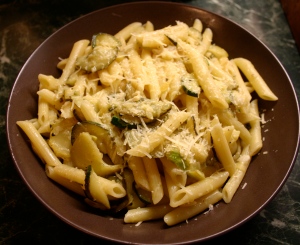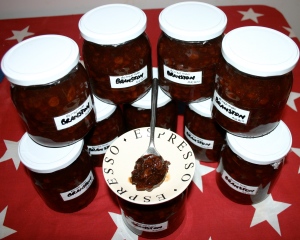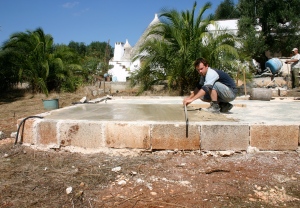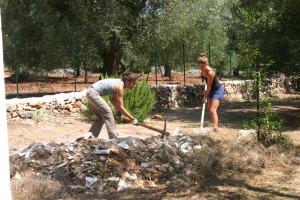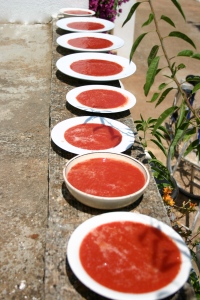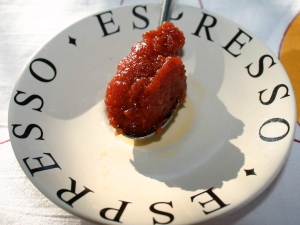So how was the weather for you yesterday? Did it herald the arrival of spring or was it a sign of a second winter?
February 2nd is Candlemas Day, or Groundhog Day in North America, and marks the midpoint of winter; halfway between the shortest day and the spring equinox, so it’s not hard to figure why it has spawned so much weather-lore around the world.
Known in pre-Christian days as the Festival of Lights; it was a celebration of the increasing strength of the life-giving sun as winter gave way to spring.
Never known to miss a trick for turning pagan festivals into Christian ones, the festival became Candlemas, where a mass was said for the candles to be used by parishioners the following year.
Alternative names for the day are: the Presentation of Christ in the Temple, and Purification of the Blessed Virgin Mary. I wonder if these hark back to the pagan Imbolc festival, which comes from a term for sheep’s milk, and is a reference to the first milking of the ewes in the spring. Imbolc is a fire festival and also a day of purification and beginnings. February comes from the Latin februare, furthermore, which means to purify and in Roman times February was a time of cleansing and purification.
Although there are slight variations across Europe, Candlemas proverbs pretty much all say the same thing…
If Candlemas be fair and bright,
Winter has another flight.
If Candlemas brings clouds and rain,
Winter will not come again.
The use of animals, most notably groundhogs in North America to predict the arrival of spring or a second winter on February 2ndcan be traced back to ancient Rome. When conquered by Romans, the Teutons picked up on the

Our resident groundhog decides to keep her own council
tradition, and concluded that if the sun made an appearance on Candlemas Day, a hedgehog would cast a shadow, thus predicting six more weeks of bad weather. If no shadow is seen, then spring will come early.
German settlers in Pennsylvania continued the tradition but used a groundhog rather than a hedgehog. Having never met a groundhog I couldn’t say whether the similarities are physical or relate to their hibernation cycles.
Wolves, badgers and bears also feature in many Candlmas celebrations/superstitions, performing much the same task as the groundhog.
At Putignano in Puglia a Bear Festival is held on February 2. If the weather is good, the bear (a costumed actor) builds a haystack to protect himself from the coming bad weather; if the weather is inclement, however the bear can relax because the weather will be good from then on.
Another Puglian take on the use of the natural world to predict the weather on Candelora (as Candlemas is known in Italy) is the laying of eggs. In local dialect, osc’ e a Cannlor e tutt l’ jaddin zeccn all’ov translates as on Candlemas day the hens begin to lay. I found similar old English proverbs refering to geese, with the gist meaning that good geese lay on Candlemas and if they haven’t laid then they won’t until St Valentine’s Day.

Carnival at Putignano
Eggs are a symbol of spring, rebirth, and fertility, which ties in rather nicely with the over-riding theme of all the Christian, pagan and secular celebrations held on February 2nd. In Ireland it is known as Brigit’s Day, in honour of the great Irish Goddess of fertility called Brigit, funnily enough.
With all these thoughts on new beginnings and fertility, we made a pact with a neighbour yesterday to hold a seed swapping party at the end of the fava (broad bean) season. We’ll hold the Festival of Fave once the beans have dried at the end of May or the beginning of June. Guests will swap any seeds they like, not just fava beans, but the reasoning is that swapping of the same variety with other gardeners will help maintain a healthy stock of seed.
Whilst Tuscans are known as bean-eaters, in Puglia the preferred staples are fava beans and chickpeas. Fave are refereed to as la carne dei poveri, or the meat of the poor. An octogenarian neighbour confirms how important they were to the poor in Puglia as when he was growing up he ate pureed fava beans for breakfast, dinner and tea.
Ncapriata is a puree made from dried peeled fava beans (with or without a potato added), dressed with olive oil and eaten with cooked bitter greens, preferably wild chicory. It’s a Puglian staple and is one of life’s simple pleasures, which definitely helps fill the hungry gap when the garden is less productive.
Everywhere you go in Puglia, people have their own variation on this recipe, but this is the favoured method in Ceglie and the one, which will feature heavily in the Festa di Fave.
First soak your beans overnight and then remove skins before boiling for around half and hour if using a regular saucepan or around eight minutes if using a pressure cooker. The use of a pressure cooker is probably sacrilegious as the dish is generally made in terracotta jugs nestled next to a fire.
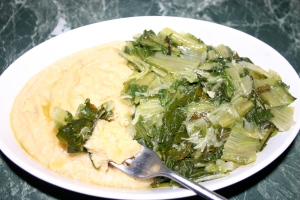
Fava beans and chicory = a taste sensation
Drain the beans and then add some chopped peeled potatoes (a couple of large potatoes for every 500g of dried beans) to the pan before returning the beans. Salt and cover with water (not too much mind as you don’t want a watery mix). Cook until the beans are soft and the potatoes disintegrate. I use a vegetable to mill to puree the mix but you could use a potato masher or ricer or go the traditional route by pummelling it with a large wooden spoon. Season with salt and lashings of Puglian olive oil.
Whilst the beans are cooking you need to wash and cook your wild chicory. If you can’t get hold of wild chicory then any mix of bitter greens, such as dandelion, rocket and chard will do. It takes around 20 minutes to braise or steam the chicory but it’s a good idea to change the water midway though cooking to leave a hint rather than an overpowering bitterness. Alternatively, strain the chicory really well before sautéing with garlic in olive oil.
Serve either side by side on a plate or mix the greens and pureed beans together, just remember to check seasoning and use lashing of good green oil. Embellishments are optional and include red onions marinated in vinegar, bread chunks, fried or pickled green peppers, steamed lampascioni, fried black or green olives, and other condiments.
Puglians really love their fava beans, so in the summertime pureed fava beans often appear with the classic Puglian stewed peppers with onion and tomato dish called pepperonata. The bitterness of the greens and the sweetness of the peppers cut through the creamy/nuttiness of the beans perfectly. So simple and yet so sublime.
40.645018
17.516426




